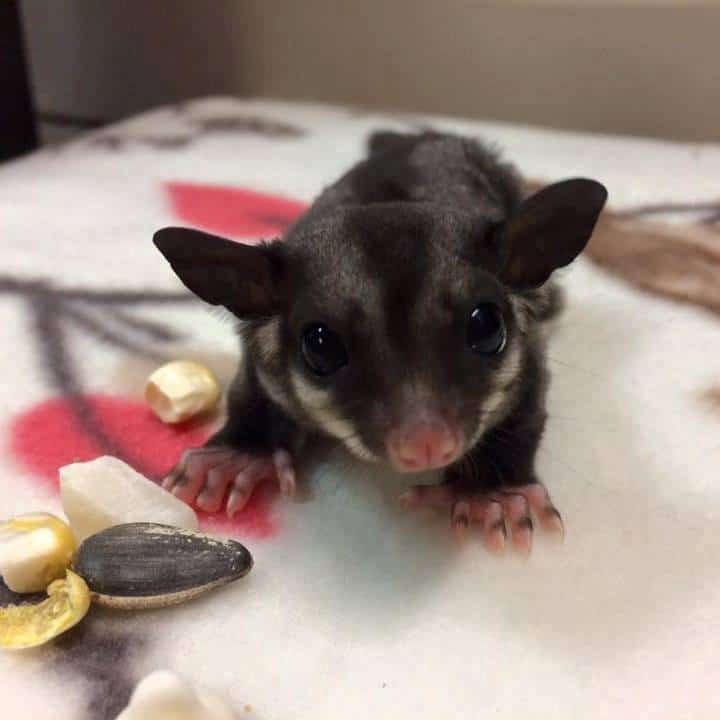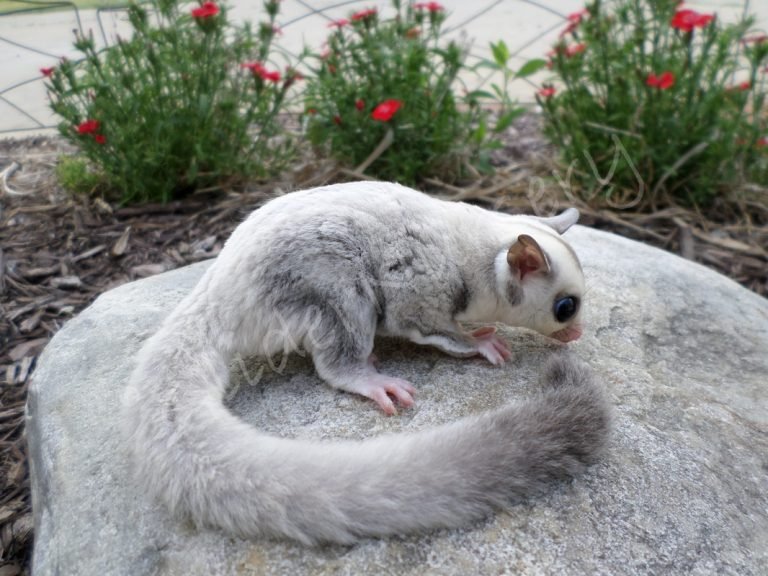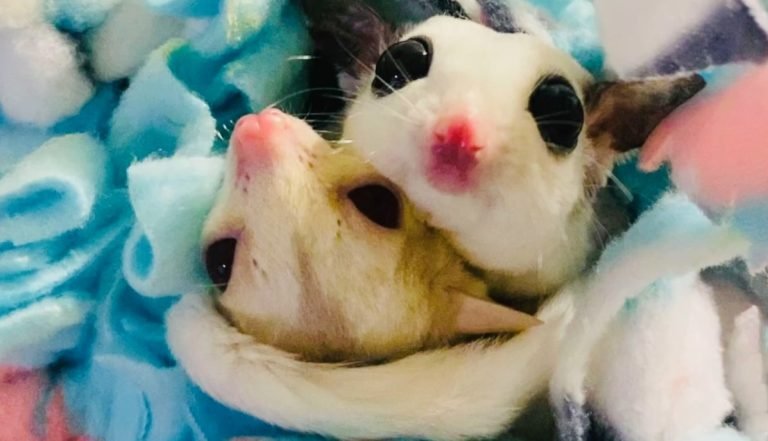Why Do Sugar Gliders Crab
Ever wondered why sugar gliders crab? These adorable little marsupials have a peculiar behavior that often leaves owners perplexed. Understanding the reasons behind this crabbing can be crucial in providing them with the best care possible. So, why do sugar gliders exhibit such behavior?
Crabbing is a natural defense mechanism for these tiny creatures in certain situations. It’s their way of communicating fear or discomfort, and it’s fascinating to delve into the world of sugar glider behavior to uncover the specific reasons behind it. In this blogpost we will describe about why do sugar gliders crab.
From potential threats they perceive to territorial disputes, we’ll shed light on this unique behavior that sets them apart from other pets. By gaining insight into their natural instincts, you’ll be better equipped to create a safe and nurturing environment for your furry friends.
So, let’s dive into the captivating world of sugar glider crabbing and discover what lies beneath their adorable yet mysterious demeanor.
Understanding Sugar Glider Crabbing Behavior
What is Sugar Glider Crabbing?
Sugar gliders are adorable little creatures known for their unique behavior, including a phenomenon called “crabbing.” When sugar gliders crab, they make loud vocalizations and assume defensive postures. It’s their way of expressing discomfort or fear in certain situations.
Differentiating Normal Crabbing from Distress Signals
As a responsible sugar glider owner, it’s crucial to understand the difference between normal crabbing and signs of distress or illness. While crabbing is a natural behavior for these marsupials, excessive or continuous crabbing may indicate an underlying issue. Pay attention to other signs like loss of appetite, unusual lethargy, or changes in bathroom habits.
Triggers for Sugar Glider Crabbing
Various factors can trigger sugar glider crabbing episodes. Fear is one common trigger – if they feel threatened or startled by sudden movements or loud noises, they might start crabbing. Stress can also play a role; changes in their environment, such as moving to a new home or introducing new pets, can cause them to become anxious and resort to crabbing.
Territoriality is another factor that may lead to crabbing. Sugar gliders are naturally territorial animals and may exhibit this behavior when they feel their space is being invaded by other gliders or even humans. Lastly, discomfort due to health issues such as injury or illness can also prompt them to start crabbing.
Creating a Safe and Comfortable Environment
Understanding why sugar gliders crab allows owners to create an ideal living environment for their pets. Here are some tips:
- Provide hiding spots: Offer plenty of cozy hiding spots within their enclosure where they can retreat when feeling stressed or scared.
- Minimize stressful stimuli: Keep noise levels low and avoid sudden movements that could startle them unnecessarily.
Triggers for Sugar Glider Crabbing: Irritation and Upset

Sudden Movements and Loud Noises
Sugar gliders are delicate creatures with keen senses. They have a natural instinct to react defensively when they feel threatened by sudden movements or loud noises. Imagine if someone snuck up behind you and shouted in your ear – you’d probably let out a scream too! Similarly, sugar gliders may start crabbing, hissing, or barking as a warning when they encounter such stimuli.
Improper Handling and Personal Space Invasion
Sugar gliders value their personal space just like we do. If you invade their territory without permission or handle them roughly, it can cause irritation and trigger crabbing behavior. It’s important to approach them gently and give them time to adjust to your presence. Building trust is crucial in maintaining a peaceful relationship with these adorable creatures.
Changes in Routine, Environments, or People
Just like humans, sugar gliders thrive on routine. Unexpected changes can stress them out and lead to crabbing episodes. Moving their cage to a different location, introducing new people into their lives, or even altering their daily schedule can all disrupt their sense of security. These changes may make them feel uncertain or anxious, causing them to express their stress through crabbing.
Identifying these triggers is vital for the well-being of sugar gliders as it allows us to minimize instances of crabbing and create an environment where they feel safe and comfortable.
Remember that when your sugar glider crabs at you, it’s not because they’re mean-spirited; it’s simply their way of communicating that something is bothering them. By understanding the reasons behind this behavior, we can better cater to their needs and build a strong bond based on trust.
So next time your furry friend starts hissing or barking at you, take a step back and evaluate the situation:
- Have there been any sudden movements or loud noises that might have startled them?
Interpreting Sugar Glider Noises: Decoding Meaning and Health Implications
Different sounds produced during crabbing have distinct meanings like warning others about potential danger or expressing discomfort.
When your sugar glider starts crabbing, it’s important to understand that they are communicating something specific. Crabbing refers to the vocalizations and noises made by sugar gliders when they feel threatened or uncomfortable. These sounds can range from soft chirps to loud screeches, and each one carries a unique meaning.
One of the main reasons sugar gliders crab is to warn others about potential danger in their surroundings. It’s their way of saying, “Hey, there might be something dangerous nearby!” This behavior is especially common when they feel threatened by unfamiliar humans or animals. By making these warning sounds, sugar gliders are alerting their colony members to stay cautious and on guard.
Crabbing can also indicate that a sugar glider is experiencing discomfort or fear. They may be feeling stressed due to changes in their environment, such as loud noises or sudden movements. In these situations, the vocalizations serve as a way for them to express their unease and seek reassurance from their companions.
Prolonged or excessive vocalizations during crabbing might indicate underlying health issues that require attention from a veterinarian.
While occasional crabbing is normal behavior for sugar gliders, prolonged or excessive vocalizations could be a sign of underlying health issues. If your sugar glider continues to make distress calls for an extended period, it’s crucial to take notice and seek veterinary care if necessary.
These persistent vocalizations could indicate pain or discomfort caused by dental problems, respiratory issues, infections, injuries, or other medical conditions. Ignoring these signs may lead to further complications and potentially worsen your pet’s condition. Therefore, it’s essential not to dismiss excessive crabbing as mere annoyance but rather as a possible indicator of an underlying health problem.
Managing Crabbing Behavior: Introducing Sugar Gliders to Other Pets

Slowly Introduce Sugar Gliders to Other Pets
When bringing a new sugar glider into your home, it’s important to take the time to introduce them properly to any existing pets. This slow and gradual process can help minimize crabbing and ensure a harmonious environment for all furry friends involved.
Proper Socialization Techniques
To reduce the chances of aggressive behavior, it’s crucial to use proper socialization techniques when introducing sugar gliders to other pets. Here are some effective methods:
- Scent Swapping: Allow your sugar glider and other pet(s) to become familiar with each other’s scents before meeting face-to-face. Swap bedding or toys between their living spaces, giving them an opportunity to get accustomed to one another’s smells.
- Supervised Interactions: When the time comes for direct interaction, make sure it is closely supervised. Keep both animals on leashes or in separate enclosures while allowing them to be in close proximity. This way, they can observe each other without any physical contact initially.
Gradual Introductions
A gradual introduction is key to helping sugar gliders feel comfortable around other pets and reducing the likelihood of crabbing. Follow these steps for a successful integration:
- Separate Spaces: Begin by keeping your sugar glider and other pet(s) in separate areas of the house. This allows them time to adjust without feeling threatened by each other’s presence.
- Controlled Exposure: After a few days of separation, start exposing your sugar glider and other pet(s) to each other’s scents by placing their enclosures near one another or allowing controlled interactions through a barrier like a baby gate or screen door.
- Short Visits: Once they show signs of curiosity rather than aggression, you can progress to short visits in neutral territory such as a playpen or a room that neither pet has claimed as their own.
Natural vs Captivity: Exploring Crabbing in the Wild and in Enclosures
In the wild, sugar gliders may exhibit crabbing behavior as a defense mechanism against predators or territorial disputes.
When sugar gliders find themselves in dangerous situations, they resort to a unique behavior known as crabbing. This involves emitting a series of loud, high-pitched vocalizations while contorting their bodies into an arched position. It’s quite a sight to see these tiny creatures displaying such fierce defensive tactics!
In their natural habitat, sugar gliders encounter various threats from predators like owls, snakes, and larger mammals. To protect themselves or their territory, they rely on crabbing to intimidate potential attackers. The loud noises and intimidating posture serve as warnings that clearly communicate “stay away!” to any potential threat.
Factors like limited space or lack of stimulation in captivity can contribute to increased instances of crabbing among pet sugar gliders.
While captive sugar gliders are safe from the dangers of the wild, they can still experience stressors that trigger crabbing behavior. One common factor is limited space within their enclosures. Sugar gliders are highly active animals with a need for plenty of room to glide and explore. When confined to small cages, they may feel trapped and resort to crabbing out of frustration.
Another contributing factor is the lack of stimulation provided in captivity compared to their natural environment. In the wild, sugar gliders have access to diverse landscapes with trees for climbing and exploring. They also engage in social interactions with other members of their colony. In contrast, captive sugar gliders often face isolation and boredom if not given enough opportunities for playtime or interaction with humans.
Providing an enriched enclosure with ample space, toys, and social interaction can help reduce stress-related crabbing behaviors in captive sugar gliders.
To address the issue of increased crabbing among pet sugar gliders in captivity, it’s crucial to create an environment that mimics their natural habitat as much as possible.
Final Thoughts
In conclusion, understanding sugar glider crabbing behavior is essential for any owner or enthusiast. By recognizing the triggers behind this behavior, such as irritation and upset, we can better cater to their needs and ensure their well-being. Interpreting sugar glider noises allows us to decode their meaning and identify potential health implications, enabling prompt action when necessary.
When introducing sugar gliders to other pets, it is crucial to manage their crabbing behavior effectively. By following proper guidelines and gradually acclimating them to new environments, we can promote harmonious interactions between different animals in our homes.
Exploring the differences between natural habitats and captive enclosures provides valuable insights into how these surroundings impact a sugar glider’s tendency to crab. This knowledge helps us create enriched environments that mimic their natural habitat as closely as possible.
To further enhance your understanding of sugar gliders’ unique behaviors, it is recommended to seek out reputable sources for additional information. Engaging with experienced owners, joining online communities, or consulting with veterinarians who specialize in exotic pets can provide invaluable guidance tailored specifically to your sugar glider’s needs.
Remember that each sugar glider has its own personality and preferences. Being patient while getting acquainted with your pet will go a long way in building a strong bond based on trust and mutual understanding.
Now that you have gained insight into the fascinating world of sugar glider crabbing, take the necessary steps to ensure your pet’s happiness and well-being. By providing them with a nurturing environment filled with love and care, you are setting the stage for a joyful companionship that will last for years to come.
Frequently Asked Questions
1.How do I know if my sugar glider is crabbing?
Crabbing in sugar gliders is characterized by loud vocalizations accompanied by aggressive postures such as lunging or hissing. If you observe these behaviors along with flattened ears or raised fur on the back, your sugar glider is likely crabbing.
2. Can sugar gliders stop crabbing on their own?
Yes, sugar gliders can stop crabbing on their own once they feel safe and secure in their environment. It is important to provide them with a calm and stress-free atmosphere to encourage positive behavior.
3. Are there any specific techniques to introduce sugar gliders to other pets?
When introducing sugar gliders to other pets, it is crucial to do so gradually and under controlled circumstances. Start by allowing them to smell each other’s scents through a closed door or cage before moving on to supervised face-to-face interactions.
4.Do all sugar gliders crab, or is it only some individuals?
Not all sugar gliders crab, as this behavior can vary among individuals. Factors such as personality traits, past experiences, and overall health can influence whether a particular sugar glider exhibits crabbing behavior or not.







